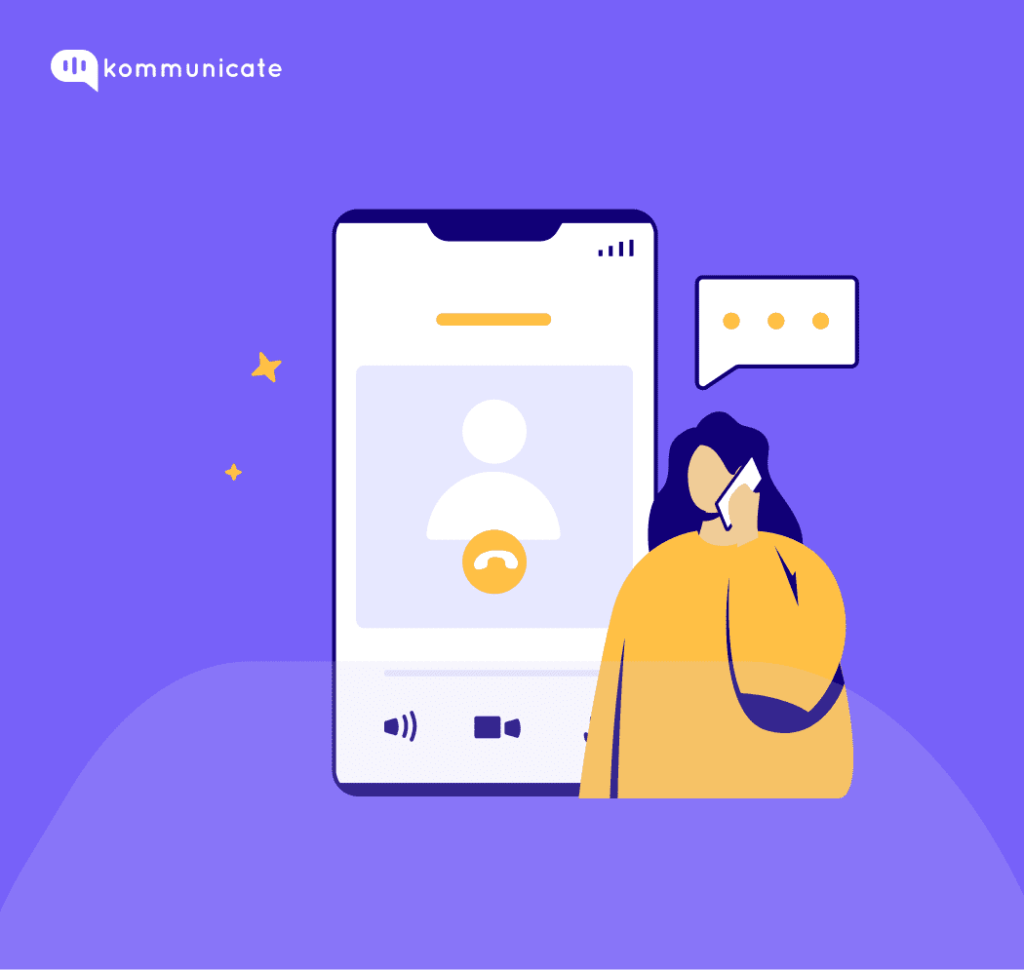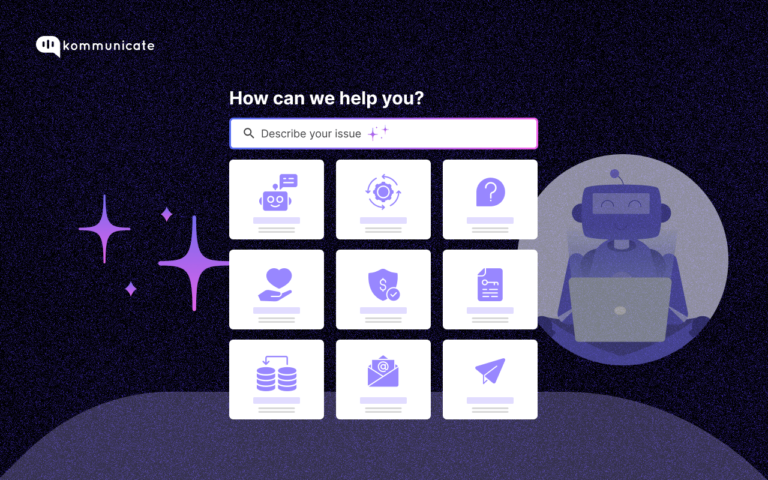Updated on October 16, 2023
Ever had a Mac or iPhone user corner you into a conversation about why Apple products are the best? Customers who like Krispy Kreme donuts will never buy from Dunkin’ Donuts if they can help. Similarly, people who are used to Starbucks coffee will never pick up a cup from Dunkin’ Donuts. These scenarios manifest steadfast customer loyalty that companies have inspired in their users through their customer service and product quality. Such loyalty to brands is not just in tech but across domains and industries.
Apple, Starbucks, and Krispy Kreme all have loyal customers who will pay more, wait longer, and even endure a higher level of difficulty to get products. This is because these brands have provided consistent levels of quality and service in their offerings and ensured customer delight. Hence their customers have transformed into loyal brand advocates.
Let us delve deeper into what makes customers loyal to a brand.
What is customer loyalty?
Customer loyalty is a continuous positive relationship customer share with a company or brand. Such consumer loyalty will inspire people to make repeated purchases, share their positive experiences with friends and family, and even turn brand ambassadors.
In the long-term, customer loyalty boosts brand credibility and overall customer trust in the company. This will directly translate into bigger sales numbers and higher profits.
Types of loyal customers
Customer loyalty comes in different flavors, and not all of them are the same. Your customers might be loyal to your business for different reasons, and it will be very helpful to know these reasons in detail. Once you identify why your customers are coming back, how to boost customer loyalty will be a simple process.
Here are the several types of loyal customers going from most desirable to least profitable and stable:
1. Truly loyal customers
Truly loyal customers buy your products or services as they believe in your company’s culture and mission. Such customer loyalty goes beyond just purchasing products regularly, but also act as a brand ambassador for your business. These loyal customers are highly engaged with your business on various levels and spread the good word about your offerings.
2. Happy or Satisfied customers
When customers really like your services or products and buy them regularly, they are known as satisfied or loyal customers. Even though they are satisfied with your offerings they can easily be convinced by a competitor to switch through a bigger discount or a superior experience.
3. Convenience Loyalty
As the name suggests customers sometimes prefer convenience over other factors and thus remain loyal to your business as long as its convenient. A convenience loyal customer will appreciate how easily they can buy a product from you. Shipping speed, location proximity, price, and features are all convenience factors. Such customer loyalty is not stable and can be swayed by competitors.
4. Loyalty based on Loyalty-programs!
These discerning customers prioritize your rewards programs or loyalty programs over your overall brand. Such shoppers will keep buying from you as long as they receive value in your loyalty programs. Competitors can wean such customers away through a better customer loyalty program.
5. Low-cost loyalty
When customers choose you over the competition due to lower product and service prices, the customers are low-price loyal. Low-cost customer loyalty is the most fleeting of them, as customers leave as soon as they find a better deal.
How to boost customer loyalty through effective communication
Technology such as artificial intelligence and big data have made communication much more efficient for companies. In our post on how to build strong customer relationships, it was shown how to reach more people with less effort. While brand communication has become easier with these advancements, there’s a tendency for the quality of communication to be compromised.
Automated and generalized communication strategies run the risk of being ineffective. Companies must find a balance between efficient yet effective communication to sustain brand loyalty and support returning customers.
Bonus read >> 27 interesting facts about customer loyalty.
Building customer loyalty through different modes of communication
- Phone calls
- Chatbots
- Website design
- Social media
- Events
Now let us understand the pros & cons of the above-mentioned modes and how to use them effectively.
1. Phone calls

First impressions are extremely important in fostering good communication, especially for people calling your business with questions regarding your products. However, many business phone systems run the risk of making customers impatient, especially if they aren’t directed to a teller immediately.
- Entrepreneur shares that one of the best ways to nail a good first impression is simply by answering the phone properly.
- Crafting a professional and efficient automated phone system will show your customers that you value their time.
- Promptly getting them in touch with personnel who can answer their queries will make them more likely to buy your product again.
2. Chatbots
While some older customers call for product queries, the younger ones will more likely check your website. Using chatbots is another method that has been furthering customer engagement in recent years. Chatbots are a business solution for all-day customer service.
Business2Community advises companies to make sure their website’s chatbots are available 24/7. Recent studies show that millennials and baby boomers appreciate getting immediate responses from a chatbot regardless of the time of day.
However, chatbots also run the risk of getting stuck and not being able to answer a customer correctly or not helping them out correctly. This is where the human touch is necessary to reach out to customers whose queries weren’t sufficiently answered by a chatbot. Let these instances differentiate you as a company committed to customer concerns.
They will remember you going out of your way to help them out and will undoubtedly be more loyal to your brand in the future. Businesses with the convenience of 24/7 customer engagement while also incorporating personal interaction are better prepared to foster customer loyalty.
Suggested read >> Chatbot Human Handoff: Seamless human takeover in a hybrid solution
3. Website design

Brand communication goes well beyond answering queries. How businesses communicate with their customers is evolving along with practices needed in building customer loyalty
Jeriad Zoghby writing for Adweek studied current trends in online company engagement and saw that businesses are adapting to the modern customer by changing how they communicate. Websites are becoming the primary tool for engaging with customers. Many brands give their customers freedom of choice on their websites, allowing them to pick from various options.
While this may seem like the best option, companies that practice this also run the risk of decision fatigue. In the face of a plethora of options, people push back. In a study, almost 50% chose to leave a website because it led to a customer feeling overwhelmed.
Zoghby says there’s a solution to this, and it is creating a “two-way digital dialogue” to understand your customer. This will help create a personal profile that reflects their needs and preferences. Instead of having them mechanically choose individual preferences online, you help shape them for consumers through conversational means. Crafting a user experience that is in tune with a particular customer’s passions is a unique service that will keep people coming back for more.
4. Social media

Companies nowadays rely heavily on mobile communication to connect with their customer base. Social media has explicitly changed how companies communicate. Medium notes that social media has allowed businesses to reach their customers on a meager budget and engage with people worldwide.
It’s a reflection of how society as a whole now connects. Maryville University, in their long-form post detailing how in 2016, there was a 63% increase in global mobile traffic. This shift in how the world interacts has led to a demand for specialists who can deliver “content that’s optimized for mobile.” Mobile content is distinct because it usually comes in bite-sized information and is easy to consume.
To keep past customers engaged, these bite-sized and relevant pieces should come at regular intervals. Aside from that, content needs to be appealing enough to attract people scrolling through their newsfeeds. These are demanding but necessary requirements in building customer loyalty that endures.
With businesses flocking to social media, how do you make your brand stand out? In a sea of white noise, it’s important to engage with your customers in a unique, memorable manner.
- You can do this by creating an online community around your brand.
- Aside from posting relevant content for your followers, one of the best ways to do this is to reward their loyalty. Forbes notes that many companies use online giveaways the wrong way.
- Utilizing giveaways to gain more followers will only attract people interested in the prize.
- What you want to do is “reward your fan base” by creating incentives for followers who are genuinely interested in your brand.
This will remind them why their loyalty is beneficial. It’ll keep them interested in following your brand for the perks it provides.
5. Events
However, building a community doesn’t need to be restricted to purely online means. Physical communication is still the foundation of our relationships, and the same goes for businesses. Building customer loyalty requires a personal touch and offline events are a great way to build that rapport with your customers.
Marketing expert Kristen McCabe emphasizes the importance of events to forge human relationships with your customers. She gave an example of a shoe store in Denver that holds monthly private events for its regular customers, complete with champagne and entertainment.
Holding regular events and meet-ups is still an essential aspect of brand communication. Through these events, you’re selling the experience and the brand. Customers come in for networking, but they leave having purchased more of your product.
Measuring Customer Loyalty
Measuring true customer loyalty is easier said than done, as loyalty is based on emotional responses. However, you can measure customer experience and operational metrics in parallel to identify loyal customers.
Here are a few metrics to help you gauge customer loyalty:
1. Net Promoter Score
This metric measures customer loyalty with a straightforward question “how likely are you to recommend us to family and friends?.” Depending on the nature of the customer responses, you can directly measure customer loyalty. This also serves as a great way to measure customer satisfaction (CSAT).
2. Customer Loyalty Index (CLI)
Like NPS, CLI is a reliable metric measured using various customer surveys. This metric is more comprehensive as it includes repeat purchases and multiple orders, along with a few other questions.
3. Brand Engagement
When a customer engages with your business through feedback across various channels, it refers to customer brand engagement. The customer can leave a product review on your website, answer your questions on social media, and more. This indicates that the company cares about customers and makes them feel valued.
4. Repurchasing and multiple product purchases
Tracking how often a customer buys products from you says that they believe in your company and not just a particular product. Repeat purchases of the same product are another way to tell that the customers will be loyal to your brand.
Conclusion
In the end, there’s no one roadmap to effective communication. Companies achieve this differently based on the type of industry they’re in and the market they wish to engage in. The most important thing is to be able to recognize your customer base and understand their behavior. Studying your market through data-driven means will be the most effective way of achieving this. Building customer loyalty is a progressive process and takes time.
Market studies are a constant process, and don’t just stop after launching your product, continuing to monitor your market closely will help you craft communication strategies that keep your customers coming back for more.
This is a guest post by Ashley Therese.
About Ashley Therese:

Ashley Therese is a communication specialist. She focuses her articles on how marketing norms have evolved in the digital age. When she is not talking about communication, she enjoys cycling and going on hikes.
Subscribe here to get the good stuff — we solemnly swear to deliver top of the line, out of the box and super beneficial content to you once a week.
At Kommunicate, we are envisioning a world-beating customer support solution to empower the new era of customer support. We would love to have you on board to have a first-hand experience of Kommunicate. You can signup here and start delighting your customers right away.






